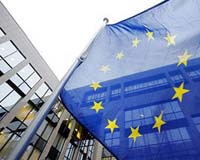 |
Manila (AFP) Oct 6, 2010 Southeast Asian nations should encourage businesses to protect the region's endangered plants and animals by showing profit can be made from biodiversity, experts said Wednesday. Between 30-40 percent of all animal and plant species in the region could soon be extinct without action to protect them, said Rodrigo Fuentes of the think tank Southest Asian Nations (ASEAN) Centre for Biodiversity. "You've got to involve the private sector and you've got to create a market mechanism that will encourage business to go into that," Fuentes said at an ASEAN environment forum in Manila. ASEAN groups the economies of Brunei, Cambodia, Indonesia, Laos, Malaysia, Myanmar, the Philippines, Singapore and Thailand, a market of about half a billion people. It covers only three percent of the world's surface but has 20 percent of all its plant and animal species. Govindan Parayil, a director of the Tokyo-based United Nations University, said there was profit to be made in "bio-prospecting," where new drugs, foods or materials can be produced from local wildlife. However he said special measures must be taken to ensure that local communities also profit from any scientific discoveries made. Private sector inputs in "green growth" industries like non-conventional energy could also boost ASEAN's manufacturing sector, Parayil added. "We usually think business will not listen because this not a very profitable area to get into (but) there are great opportunities here for business in green growth," Paraynil said. Raman Letchumanan, head of the ASEAN secretariat's environment division, called for wider use of "eco-labelling," as this encourages consumers to buy such products. Eco-labelling, where products get a special tag after meeting high environmental standards, is already being done in Singapore and parts of Indonesia and Thailand, Letchumanan added. Businesses must also be convinced to adapt practices that can cut costs through more efficient use of energy and raw materials, the experts said. The experts warned that ASEAN could not copy the high-consumption model of the United States without suffering serious environmental damage.
earlier related report "It looks like the last (fertility) treatment was a success," said Manfred Niekisch, director of the zoo in western Germany. "It is not that unusual that a pregnancy goes undetected in a big cat." Mother Malea, nine years old, however rejected the cub, a female called Daseep. The newborn was nonetheless doing well under human care, almost quadrupling in weight to four kilos (nine pounds), opening her eyes and becoming very playful, the zoo said. Later this month Daseep will join Tschuna, a Siberian tiger cub born two and a half weeks earlier at another German zoo, in Wuppertal, who was also spurned by her mother. This would help both cubs to learn social skills. "This is important so that both tigers can get on with others belonging to their own kind in the future and hopefully start a family of their own," Niekisch said. Sumatran tigers are an endangered species, with their numbers in the wild in their native Indonesian island of the same name reduced to around 400 by deforestation and poaching, the zoo added. In Europe there are 101 Sumatran tigers, the smallest subspecies of tiger, in captivity. The last Sumatran tiger birth in Frankfurt zoo dates back 26 years when Mali and Cha gave birth to two cubs, one of whom survived.
Share This Article With Planet Earth
Related Links Farming Today - Suppliers and Technology
 Anti-GM crop petition tops million signatures
Anti-GM crop petition tops million signaturesBrussels (AFP) Oct 6, 2010 More than one million signatures have been gathered in a legal bid to "freeze" GM crop cultivation in the European Union, but a Brussels official said Wednesday the complaint would be passed to "political" advisers. Environmental campaigners Greenpeace and Avaaz announced that the online petition target had been crossed, seeking to use a new citizen charter created under the European Union's ... read more |
|
| The content herein, unless otherwise known to be public domain, are Copyright 1995-2010 - SpaceDaily. AFP and UPI Wire Stories are copyright Agence France-Presse and United Press International. ESA Portal Reports are copyright European Space Agency. All NASA sourced material is public domain. Additional copyrights may apply in whole or part to other bona fide parties. Advertising does not imply endorsement,agreement or approval of any opinions, statements or information provided by SpaceDaily on any Web page published or hosted by SpaceDaily. Privacy Statement |